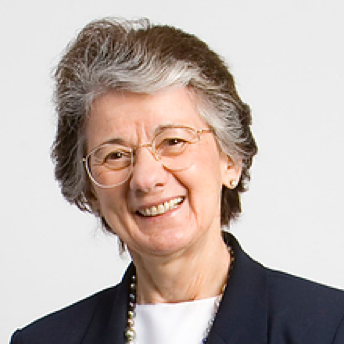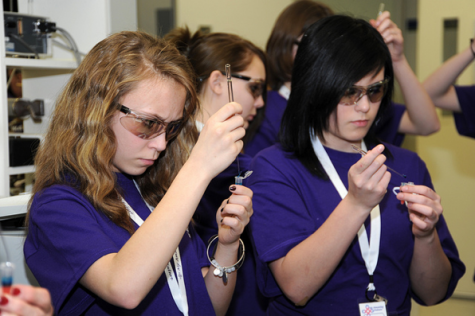Women Make Strides in Science and Tech
November 29, 2016
Since the days of Ancient Greece, women have been making strides in science.
On October 11, 2016, the world celebrated its Eighth Annual Ada Lovelace Day. The premise of Ada Lovelace Day is to celebrate all of the women who work and participate in the fields of science and technology. Ada Lovelace is considered the first computer programmer, and in 2009, she was posthumously honored with her own day. She was only one of generations of women who are changing the game in science and tech.

These women, who are making strides by simply being in science and technology are everywhere, even in Hershey High School. Caitlyn Zechman, biology teacher for HHS, is one of them.
Zechman did not always want to be a scientist. In fact, she said she did not like it throughout high school. It was a college science course that awakened Zechman’s love for science and changed the course of her life.
“When I was in college, I went as a Marketing major, and I took my first business class and I hated it. I had to take science Gen-Eds, and I took a class called the Biology of Aging, and I loved it. So then I took another science class, and then I changed my major,” Zechman said.
However, it wasn’t always that easy, Zechman said. She found that since she did not have the science background of her peers, she had a lot of catching up to do. Another struggle for Zechman was the perceptions that surrounded her. According to Zechman, when she told people of her plans to go to medical school and pursue a career in the sciences, many people remarked that she should have just been a nurse instead. Feeling as though people were only saying this because she was a woman was difficult, said Zechman.
On the positive side, Zechman believes that women are becoming more relevant in the science and tech community, especially in the fields of science education.
Emily Kraus, a graduate student at the University of Pennsylvania, has thoughts on the matter as well. Kraus, who is studying experimental biophysics, said that although she has been lucky enough to have not directly experienced sexism in her school and work, she is well aware of its existence, especially in science.
Another woman who has shaped the science world is Rita Colwell. Colwell is a revered scientist and lecturer, and her work on cholera is monumental. Her discoveries proved that cholera was not a result of sewage or pollution in water but in fact a naturally occurring bacterium. Colwell also pioneered methods of predicting cholera outbreaks. In addition to this work, Colwell was also the 11th director of the National Science Foundation, and the first female one.
Colwell’s rise to one of the most important figures in science today was not always an easy one, though. She said that when she was young, women were even less welcomed in the science and technology spheres than they are today. Colwell couldn’t attend Harvard University for her college, because at that time, women were not allowed to attend.
“In those times if a girl raised her hand to ask a question, the professor wouldn’t call on her,” said Colwell.

This attitude followed Colwell throughout her career in science, she said. Although women and minorities are far more accepted in science than they were when she was exploring her field, Colwell maintains that a highlight of her term as Director of NSF was creating and working with programs to integrate women into the science community.
Colwell is not the only one who has gone beyond to ensure that women and girls will grow up feeling welcomed in science. Rachel Wolf, a graduate student at the University of Pennsylvania, works with a fervor to ensure that girls can continue to be a part of science and technology. Wolf has known since she was a child that she wanted to be a scientist, and as a studying cosmologist, she lives her dream and has the opportunity to make sure girls like her do as well. When she was in college, Wolf worked at the Griffith Observatory, and one memory of her time there is especially poignant.
“I actually had a patron who came in with his daughter, and he told me that his daughter told him ‘She’s a scientist, so I can be a scientist too,’” Wolf said.
Wolf believes that simply being available and open to connect with aspiring scientists is one of the most important things to getting girls interested in science. She also thinks that an integral part of increasing girls’ involvement is science is ending the stigma that girls in science can only be one way.
“I’ve been told that I can’t be a scientist and like to shop,” said Wolf.
Overall, these women scientists are ready to see more girls taking an interest in their profession.
Their advice? “Don’t give up.”




